Happy New Year!


We often count our blessings at the holiday time of year. Sometimes it takes a reminder to know how fortunate we are to live in the US, even during troubled times.
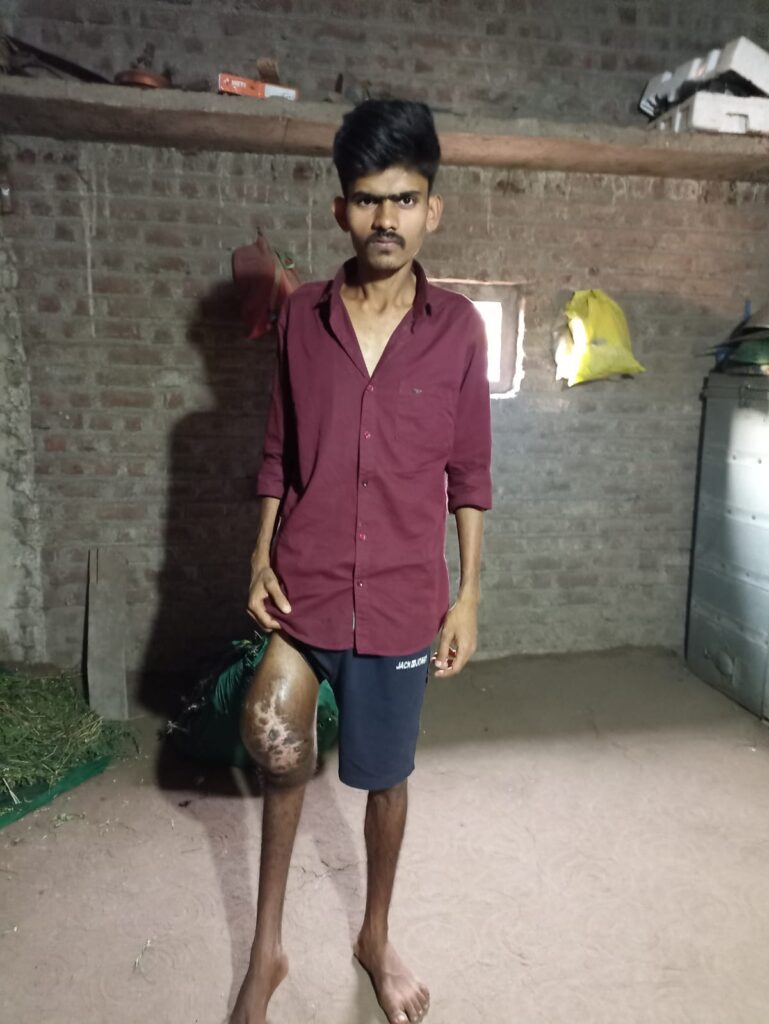
I traveled in India for one week this month, primarily to visit the Christian Medical College (CMC) Vellore, where they specialize in caring for people with hemophilia. World renowned, we trust them and offer our support for surgeries for the poor. To date we have provided surgery or prosthetics for about a dozen patients. One of these is Kuvarsing.
I learned from our wonderful colleague and friend Usha Parthasarathy that this 25-year-old with hemophilia B has an inhibitor, making his life in poverty doubly difficult. He lives in Ramapur village, Maharashtra. His family works “in the field,” and he has two brothers and a sister.
He was undiagnosed for years. One day he developed swollen knees and severe pain in one knee. Despite the pain, Kuvar took his school exams. The control the boys have over pain is astounding. After the exam, he attended a health camp where he was informed that blood had accumulated in his knee and surgery was required. He underwent surgery and doctors applied bandages to his knee for three months. After the bandages were removed, swelling persisted. Further complications led him to the health camp for another surgery, during which more bleeding occurred.
Doctors referred him to King Edward Medical (KEM) Hospital in Mumbai, where it was diagnosed that Kuvar suffers from hemophilia B. From 2019 to 2020, despite health setbacks, Kuvar enrolled in a Bachelor of Arts program and successfully completed the first and second semesters!
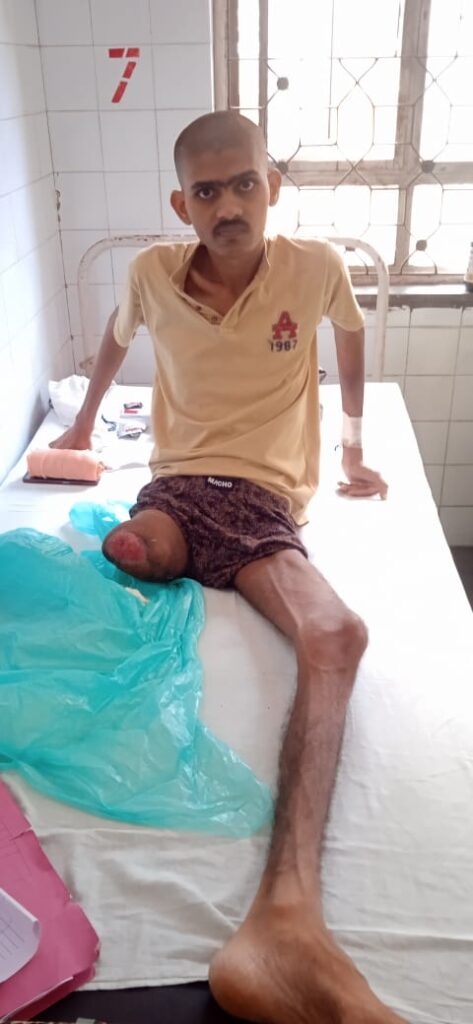
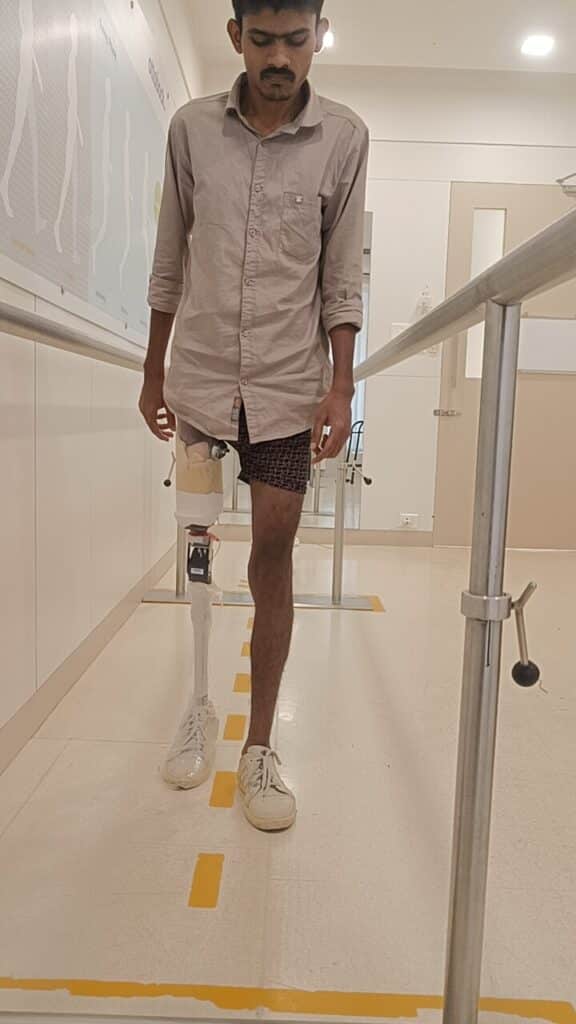
Unfortunately a pseudotumor—almost unheard of in the US—developed in his knee. He tested positive for an inhibitor. The medical team at KEM hospital did their best to save his limb, but the high infection rate of the pseudotumor eventually led to amputation. The national group Hemophilia Federation (India) provided factor. The medical team at KEM wanted to provide him with a prosthetic leg for which he needed monetary support. But Kuvar would need to pay for this himself. Due to Kuvar’s low economic background, the financial burden has placed him in a difficult situation.
When we heard about this, we acted. Kuvar now has a new leg… and a new life. A great way to start 2025!
By Catherine Canade
Coalition for Hemophilia B Health and Wellness Coach
‘Tis the season for family, fun, and stress. This year, give yourself the gift of wellness by using strategies to reduce stress, strengthen family connections, and truly enjoy the holidays. As the holidays approach, it’s easy to feel overwhelmed, so it’s important to embrace these wellness tips for a stress-free season.

(1) Practice Open Communication: Be Intentional
Find the time to talk as a family about the holiday stressors and how you want to address them when they come up. Unrealistic expectations can lead to disappointment. Set realistic goals and expectations to help minimize stress. Practice gratitude and contribute to your community.
(2) Make Time For Time Management: Quiet Your Calendar
Create a holiday schedule that allows for balance between work, family, and relaxation. Introducing time management to a hectic schedule can help reduce the feeling of being overwhelmed. The holiday season rarely goes as planned, so have a flexible mindset’ No matter what the celebration looks like, connect it to the bigger reason for the season. Make time for what you love that brings you joy and happiness.
(3) Establish Boundaries: Unplug From Work
Set healthy boundaries by limiting the time you spend with extended family, friends, and holiday gatherings. Creating a budget for financial stress is common during the holidays. Focus on the meaning and values of this time of year rather than just the material aspects. This can help shift the emphasis away from consumerism and reduce stress.
(4) Resolve Conflict: Share Responsibilities
Conflict often arises when you’re Hungry, Angry, Lonely, or Tired. Use the HALT acronym to check in with yourself, Addressing these needs helps you manage holiday stress more effectively. Healthy coping strategies include deep breathing, mindfulness.journaling, exercise, music, and connecting with others.
(5) Maintain Traditions: Prioritize Your Own Peace
Establish and uphold meaningful rituals and traditions to bring a sense of continuity and comfort during the holidays. Perfectionism can lead to unnecessary stress. Normalizing imperfection reminds you that no holiday season is perfect, and it’s okay to have some spontaneity and unexpected surprises. Honor those who aren’t here by cherishing the fond memories you’ve made together.
(6) Respond With Kindness
While you can’t control how others act during the holidays, you can choose your own response. Be kind to yourself-practice self-care and self-love. It’s okay to take a break or say no to social events. Focus on what truly matters to you this season. Remember the “ME” in MERRY’
The Coalition for Hemophilia B. Reprinted with permission. Subscribe to their newsletter at https://www.hemob.org/
I’m in India this week—amazing India—to meet a group of lovely and inspiring women. These are the ladies of Tamil Nadu, the southern-most Indian state, the tenth largest Indian state by area and the sixth largest by population. It’s famous for its Hindu temples; its capital is Chennai, formerly known as Madras. While I’m here for primarily a meeting with a particular hospital where I’ve been assisting with surgeries, my colleague and longtime friend Usha Parthasarathy suggested I come early to meet the ladies of Tamil Nadu.
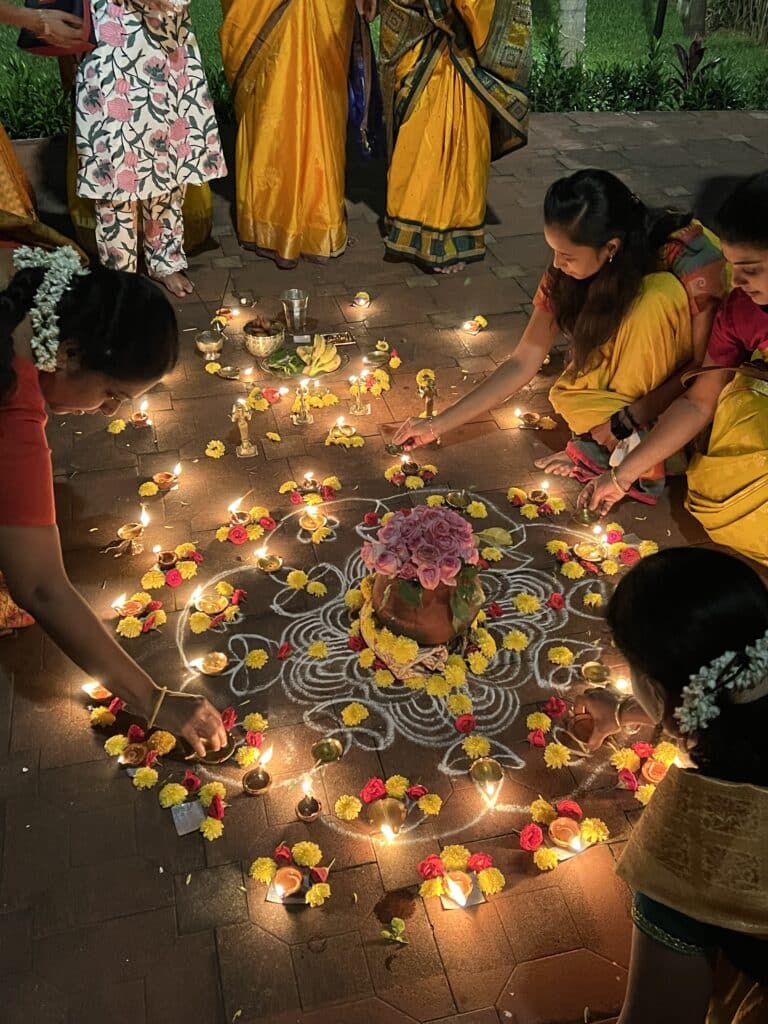
The ladies just formed a women’s group and had not yet met. This was the weekend! At small resort on the Bay of Bengal, nineteen women connected with hemophilia journeyed to meet one another. Some were mothers of children; some married a person with hemophilia; one was a young lady who has hemophilia. All were anxious to meet.
The weekend started with a puja, a ritual ceremony honoring the gods and also kicking off the celebration of meeting. We gathered round a chalk-inscribed design and lit small oil lamps; Ambika, a pro-active mother, sang a prayer. It was very moving and beautiful! Then we sat in a circle and played a game: each person paired with another and asked each other questions to learn who they were. They later had to repeat all they learned about the other person.
Later, Ambika explained that the meeting was called “Sunflowers of Hope” because the sunflower doesn’t always need rain or sun. It can draw nourishment from the sunflower next to it. What a great analogy to this meeting of women! And it’s why we dressed in yellow.
The most poignant moment for me was when one mom approached Usha and Amika. I could see them talking softly to her and moments later bedecked her with pretty earrings. Indians love their jewelry! The mom started crying and they all hugged. But what caused this?
Usha told me how her teen son with hemophilia had died just two years ago. Recently she was with relatives, who criticized her for wearing gold earrings. She should be in mourning, not wearing jewelry! Well, this is where a women’s group can work wonders. Usha and Ambika brought out a gift they had for her—beautiful new earrings. They supported her decision to wear them.
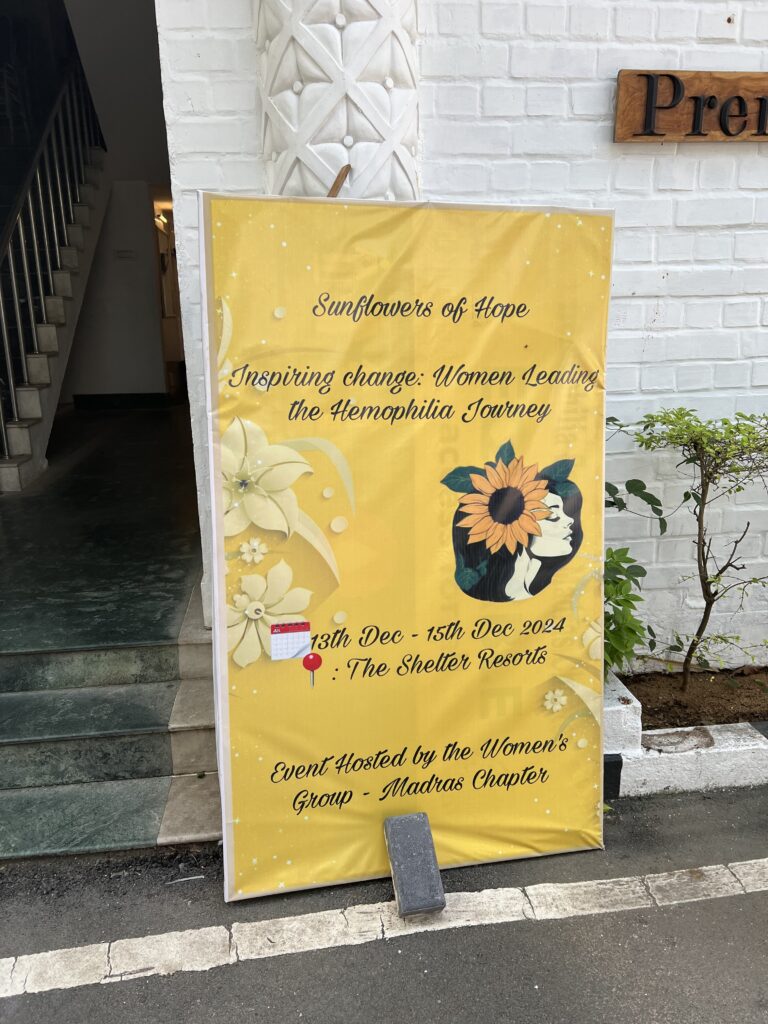
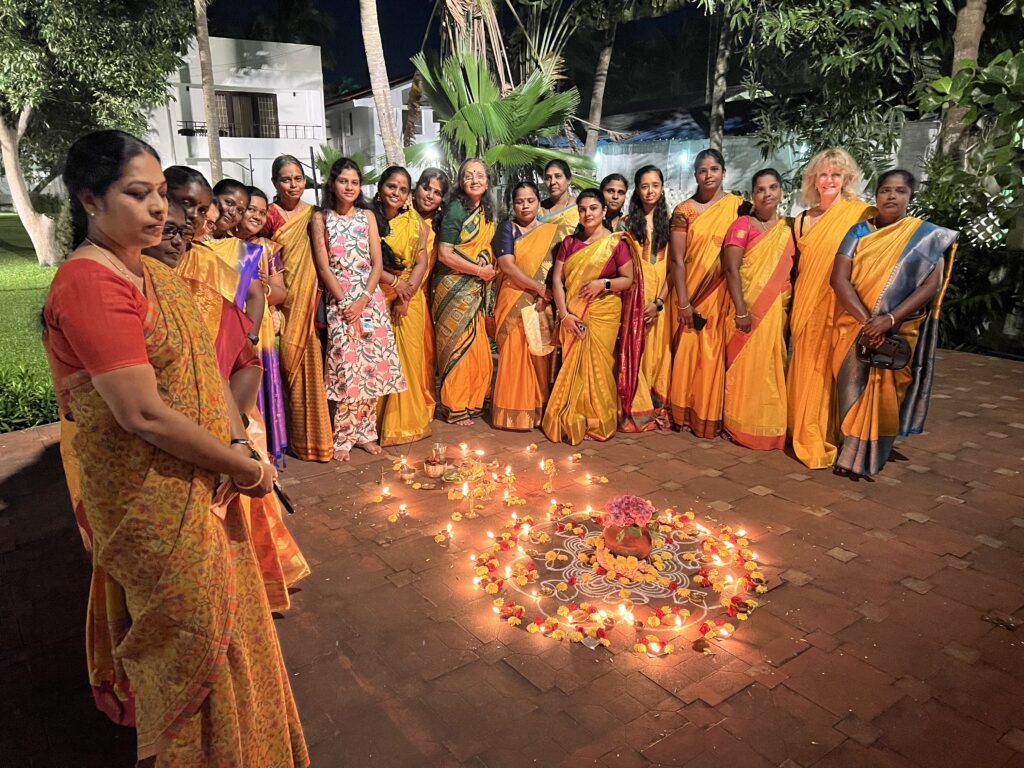
The rest of the weekend was learning: about leadership, advocacy, hemophilia, gene therapy and more. There were more games and workshops. The women seemed like best friends by the end.
But of all the marvelous things that took place this weekend, nothing could compare to the earrings. Such profound loss, such a simple act of kindness… and a mother now has strength to face her judgmental relatives. All because she was found the power of women who band together, the ladies of Tamil Nadu.
December 1 is World AIDS Day; this blog today is dedicated to sharing more about that history through a book review by our esteemed historian Richard Atwood of North Carolina. The bleeding disorder community was deeply harmed and impacted by the spread of HIV through the nation’s blood supply in the late 1970s and early 1980s. We lost about half of our 20,000 population, with many more surviving with AIDS and/or hepatitis C.
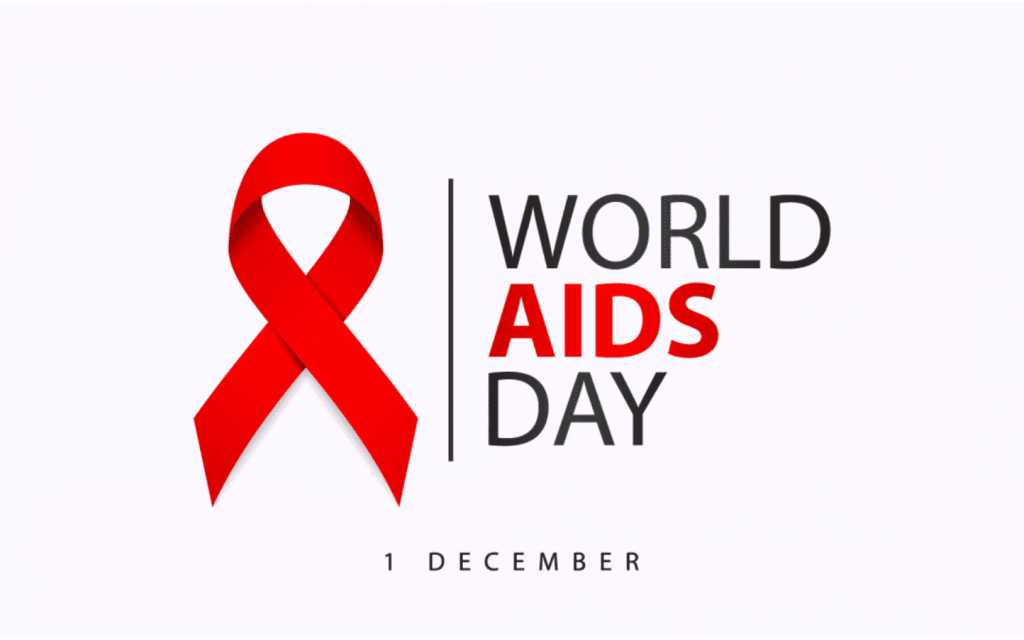
Some statistics: About 88.4 million people have been infected with HIV and about 42.3 million people have died of AIDS. Globally, 39.9 million people were living with HIV by the end of 2023.
The book is Blood and Steel: Ryan White, the AIDS Crisis and Deindustrialization in Kokomo, Indiana, by Ruth D. Reichard. The 242-page book was published in 2021.
Richard writes:
Ryan White was born on December 6, 1971 in Kokomo, Indiana, a mid-sized American city. His mother, Jeanne White, had hemorrhaged and Ryan was subsequently diagnosed with hemophilia, so both were referred to hematologists in Indianapolis. A sister, Andrea, was born in 1973, the same year that Ryan became the poster child for the Howard County Hemophilia Society. Jeanne divorced, remarried, and moved to Windfall. Following a second divorce, Jeanne, as a single mother with two kids, moved back to Kokomo in 1984. Ryan attended Western Middle School in nearby Russiaville. He was diagnosed with AIDS in December 1984, becoming the 31st AIDS case in Indiana and the second case in Howard County. Rather than hide his AIDS diagnosis, Ryan bravely chose to be open about it. Ryan wanted to attend school, but some local activists wanted him barred from public schools. When Ryan returned to school on February 17, 1986, the Continental Steel Company locked its gates.
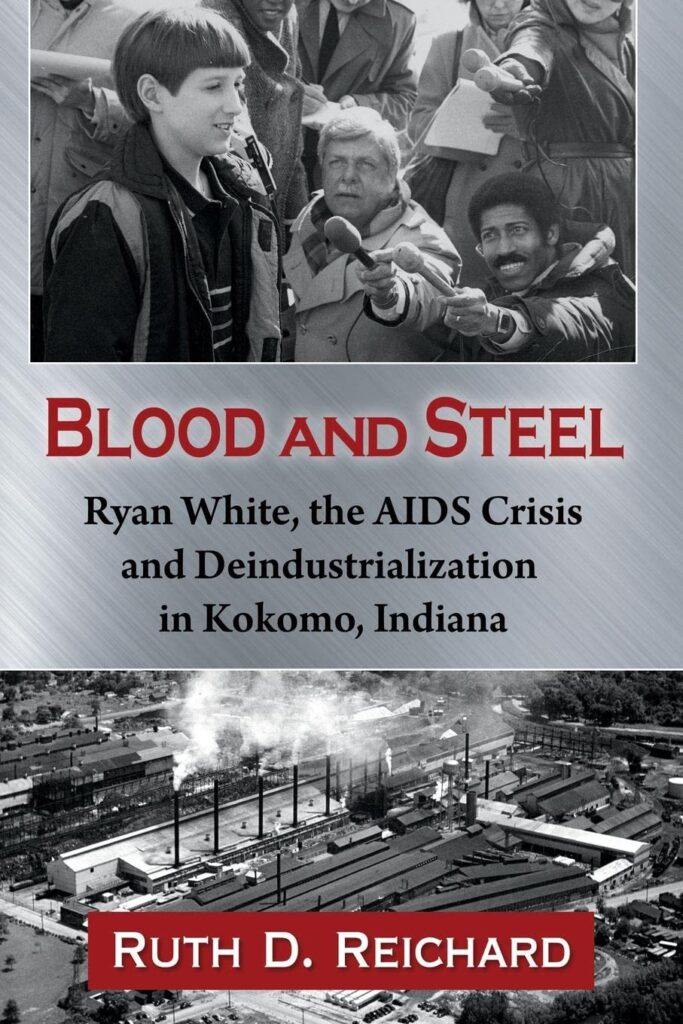
After 90 years as the largest employer on a 183-acre site in Kokomo, Continental Steel was bankrupt by 1980, then in Chapter 11 proceedings, that led to liquidation through Chapter 7 proceedings. Local residents were unaware that the former steel plant would become a Superfund toxic site due to massive chemical pollution that endangered the environment and the health of the workers. Certain citizens, instead, reacted to the “toxic” threat of a boy with hemophilia and AIDS wanting to attend school by bringing lawsuits to bar him. There was more national news about one boy than about an entire unemployed work force.
Ryan, the innocent and blameless victim, became a poster child for AIDS. Following reversed court decisions in 1986, Ryan entered the 8th grade at Western High School. Due to failing health and not being eligible for AZT, plus animosity at school, Ryan moved with his family to Cicero in 1987 to attend Hamilton Heights High School, where he was accepted. The Ryan White Story, a made for television movie, was shot in Statesville, North Carolina, then aired in January 1989. Ryan interacted with many celebrities. Ryan died on April 8, 1990 at age 18. Jeanne finished Ryan’s co-authored autobiography before she advocated in Washington for the Ryan White CARE Act of 1990. Jeanne remarried in 1992 and later moved to Florida. The Children’s Museum in Indianapolis created The Power of Children exhibit that preserved Ryan’s bedroom and told his story. Kokomo did not memorialize Ryan, while Cicero did. Kokomo turned the former Continental steel plant site into soccer fields.
Richard adds: This text, that compares and contrasts historical biographies of both a boy with hemophilia and AIDS and a failed steel factory, includes 27 pages for Chapter Notes, 10 pages for a Bibliography, 12 pages for an Index, and two photographs on the cover. The city of Kokomo reacted more to the toxicity of a boy with AIDS than to the toxicity of a polluted industrial site. For both Ryan and Continental Steel, there were multiple legal battles fought in the courts, the health system, and the educational system. Each chapter in the book contains sections on Blood, Steel, and Ryan White to reveal the ongoing events for both historical biographies, mainly from the 1980s, with updates to the present. The complex legal issues are clearly described and interpreted. The author, both an attorney and a historian, lives in Indianapolis, Indiana.
Would you like to be added to our email list to continue to recieve future editions of PEN in PDF format?
Yes: No:
Please share your location to continue.
Check our help guide for more info.

